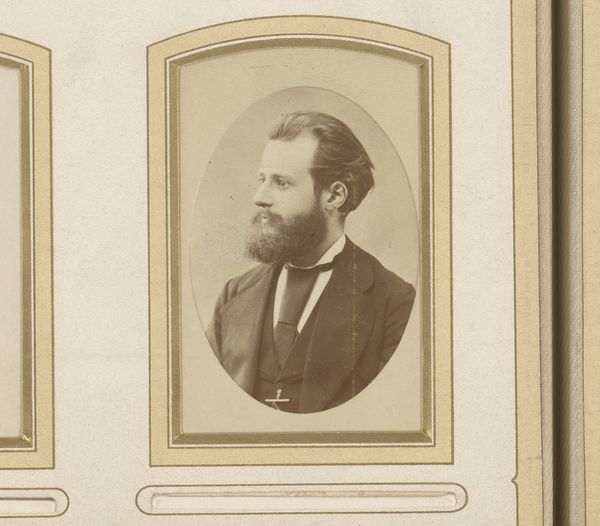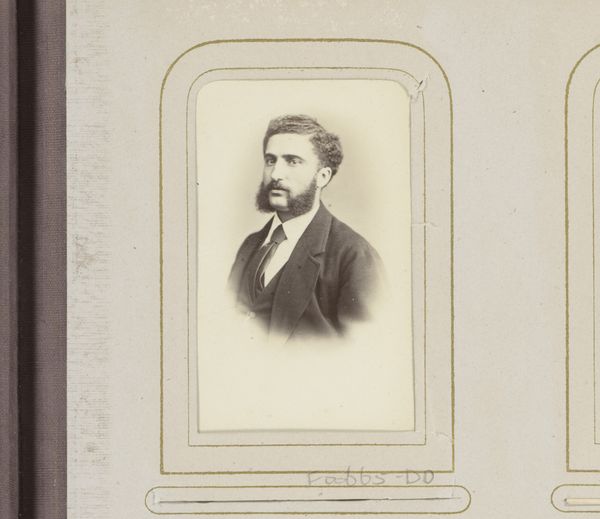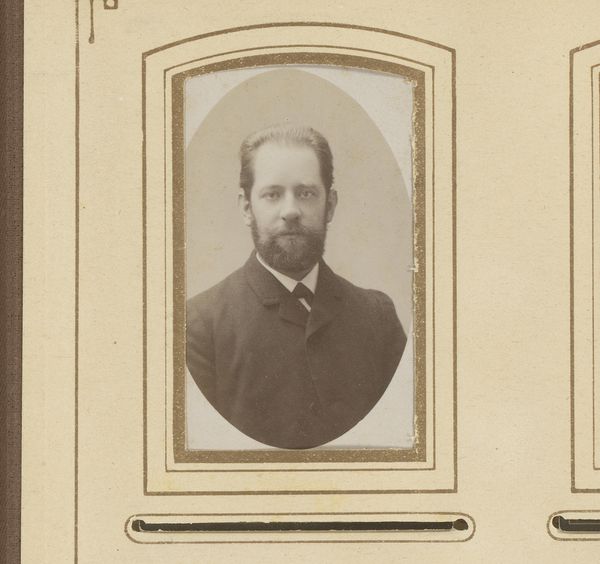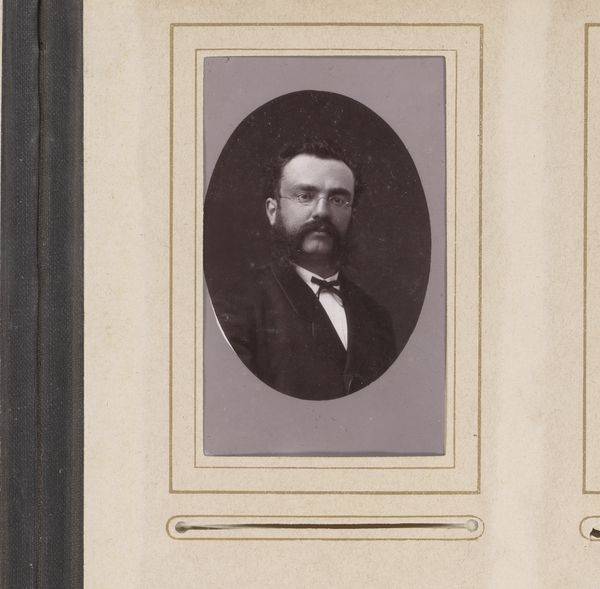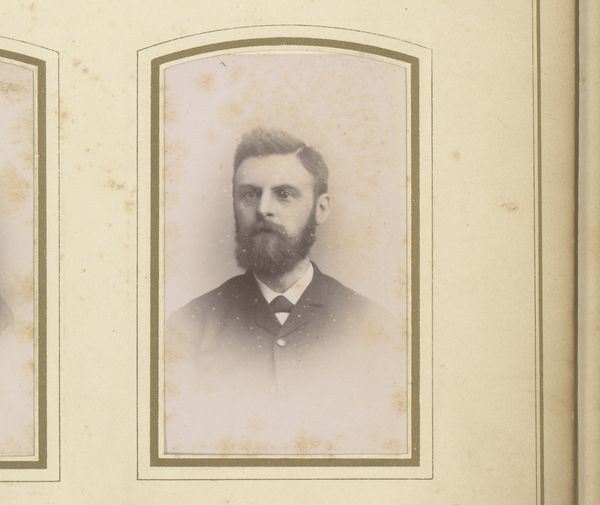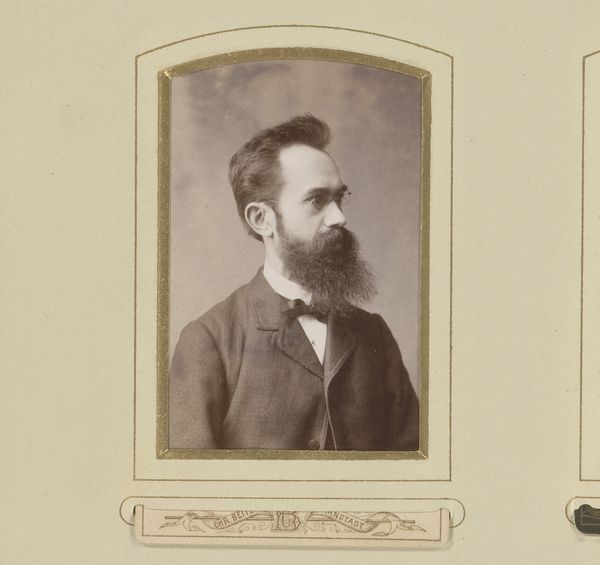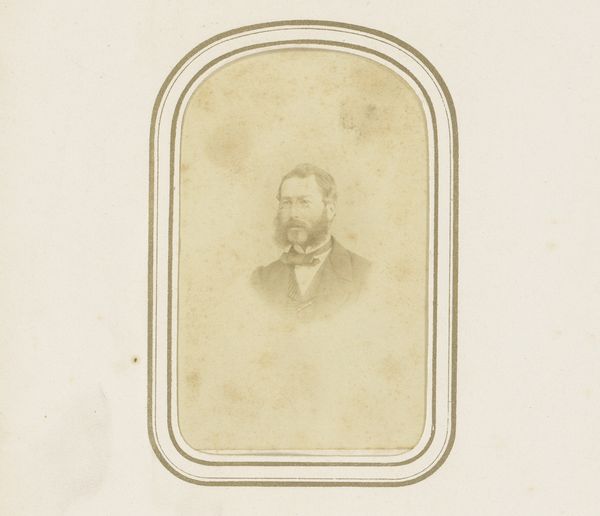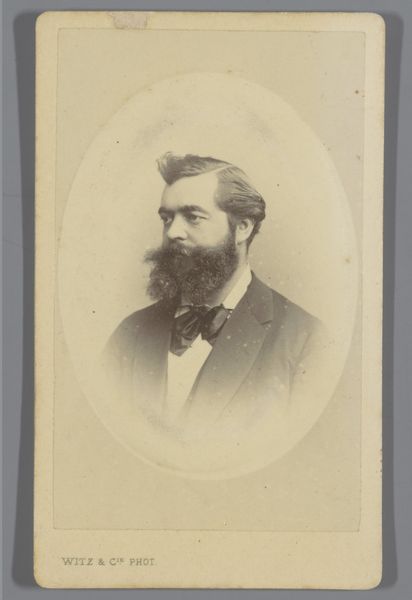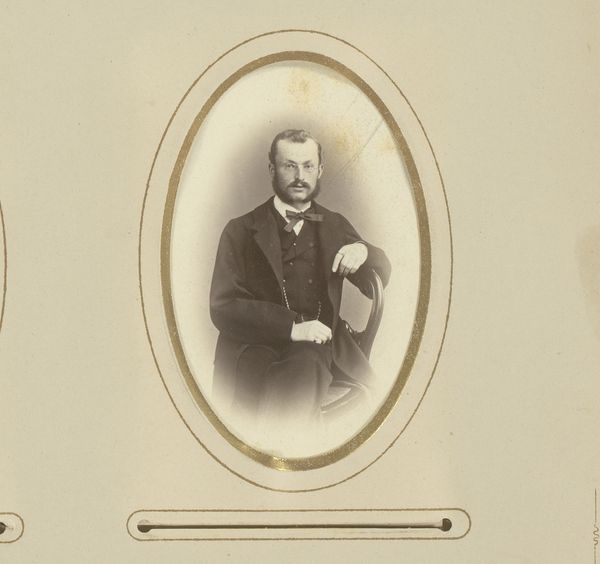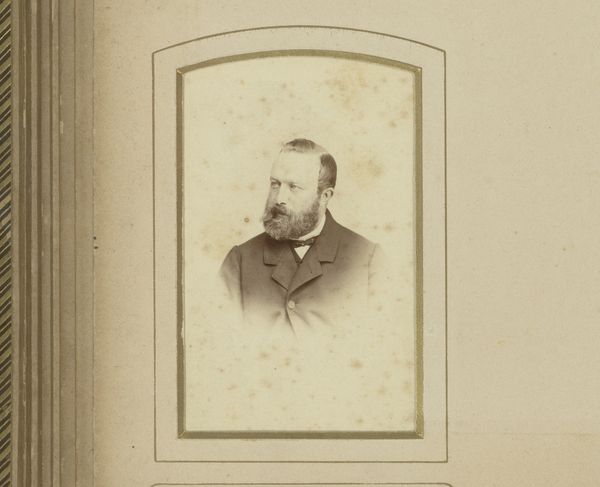
photography, albumen-print
#
portrait
#
photography
#
albumen-print
Dimensions: height 81 mm, width 52 mm
Copyright: Rijks Museum: Open Domain
Editor: Here we have Friedrich Singer's "Portret van een man met snor en baard," made sometime between 1850 and 1900, using albumen print photography. The oval format gives it a sort of formal, historical feeling. What catches your eye when you look at this portrait? Curator: The beard, immediately. Notice how deliberately it's shaped, how much care was put into presenting that particular image. The beard, in that era, became a signifier - often signaling masculinity, wisdom, even a certain artistic leaning, a rebellion against clean-shaven conformity. Does it convey those attributes to you? Editor: I can see that. It’s not just a beard; it's a statement. Almost like the carefully chosen props in a painted portrait. Curator: Precisely! And the gaze - slightly averted, thoughtful. It invites the viewer to speculate. Albumen prints, especially in portraiture, allowed for a dissemination of images like never before, contributing to the rise of celebrity culture, almost creating secular icons of public and private citizens. This wasn't just a likeness; it was a carefully crafted presentation of self. Do you think that’s still happening today? Editor: Oh definitely, just think about social media profiles! Seeing the symbolism through the lens of photography really opens up a new way to read these old portraits. Curator: Indeed, it's all about decoding the image and recognizing its continued relevance to us. I found myself thinking how persistent this game of constructed personas remains throughout history and cultures.
Comments
No comments
Be the first to comment and join the conversation on the ultimate creative platform.
